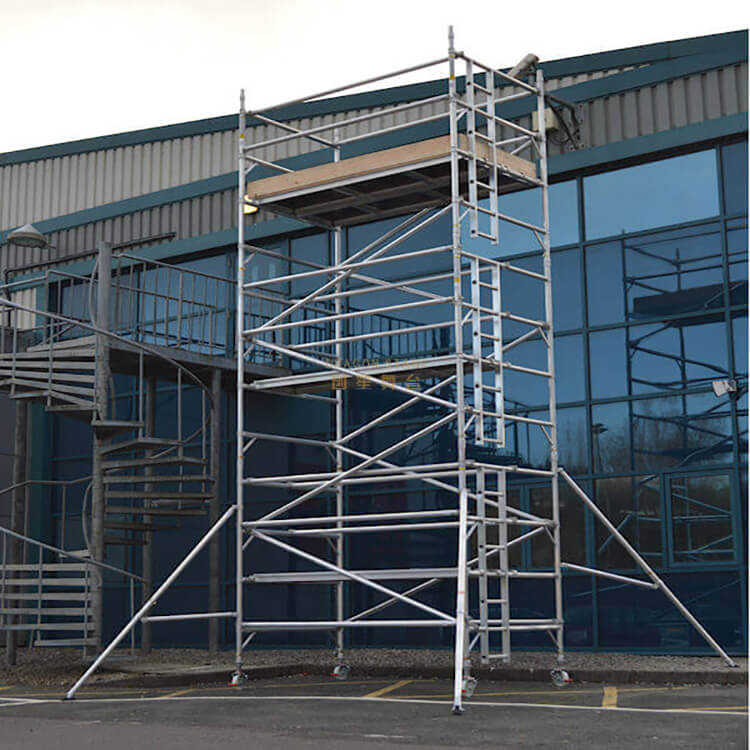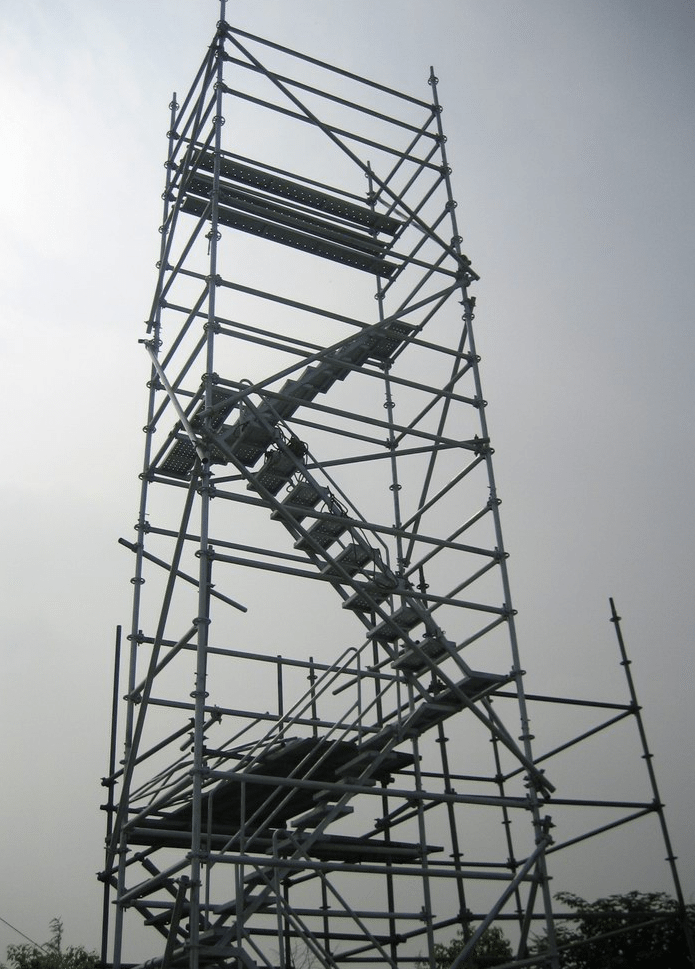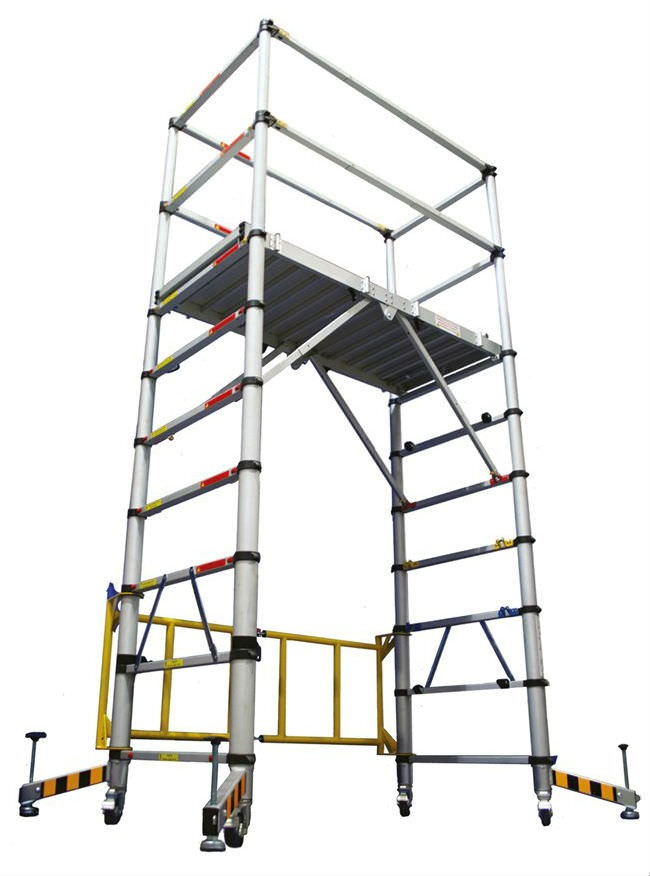Scaffolding Hoists: Lifting Your Job to New Levels
Scaffolding lifts maximize material transport, conserving time and enhancing efficiency on building and construction websites. They change hands-on lifting approaches, lowering threats and enhancing effectiveness. Whether electrical or hand-operated, raises deal various weight capacities and operational rates. Precaution such as safe accessory points and harnesses are essential. These hoists streamline procedures, promote height access, and give cost-effective services for various jobs. Correct setup and maintenance assurance continuous operation and stop break downs. Evaluate costs, guarantees, and security attributes when choosing a hoist. Discover more concerning the benefits, kinds, safety measures, and applications of scaffolding hoists for your job's success.
Benefits of Scaffolding Raises
Scaffolding raises deal unrivaled efficiency and security when raising hefty products to raised building and construction sites. The effectiveness benefits of using scaffolding hoists appear in the structured procedure of delivering materials to various degrees of a construction site easily and accuracy. By utilizing scaffolding hoists, building and construction jobs can save valuable time and rise productivity by eliminating the requirement for hand-operated labor-intensive lifting techniques. This not just improves effectiveness but also guarantees that materials are moved quickly and firmly, minimizing the threat of accidents or damage throughout transport.
Furthermore, scaffolding raises add to considerable expense savings by reducing the labor hours required for product handling jobs. Making use of hoists minimizes the demand for additional workforce, ultimately cutting down on labor expenses. Additionally, the precise and regulated movement provided by scaffolding hoists aids avoid material wastage and damages, saving money on substitute materials. In general, the performance and cost-saving advantages of scaffolding hoists make them a vital device for any type of building and construction project intending to maximize operations and enhance safety measures.
Types of Scaffolding Lifts
When thinking about kinds of scaffolding raises, crucial variables to review consist of:

- Electric versus guidebook raises
- Lift weight capacity
These distinctions are essential in figuring out the performance and performance of the raising tools for various project demands.
Recognizing the distinctions between electric and manual hoists, as well as the weight capability they can sustain, is vital for choosing one of the most suitable scaffolding raise for a project.
Electric Vs Manual Hoists
An essential factor to consider when picking a scaffolding hoist is picking between an electrical or hand-operated kind. Electric hoists are powered by power and are recognized for their effectiveness and simplicity of usage. They are excellent for tasks that need regular lifting of heavy lots as they decrease manual work and rise efficiency.
On the other hand, handbook hoists are run by hand and are suitable for smaller sized tasks or jobs that do not require continuous lifting. While handbook hoists might be more economical initially, electric hoists provide comfort and rate, specifically for larger building and construction projects.
Ultimately, the choice in between electric and hand-operated hoists relies on the specific requirements of the job pertaining to work and spending plan.

Hoist Weight Capacity
One essential aspect to consider when selecting a scaffolding hoist is its weight ability, as this dictates the kind of tons it can securely raise. Recognizing the hoist's weight ability is crucial for guaranteeing the safety and performance of your project.
Right here are four bottom lines to think about relating to hoist weight capability:
- Hoist Maintenance: Normal upkeep is essential to assure that the hoist operates at its ideal ability and can safely lift the designated loads.
- Weight Distribution: Effectively spreading out the weight of the load throughout the hoist guarantees that it can lift the load without surpassing its capacity.
- Load Limitations: Be mindful of the maximum weight capacity of the hoist to prevent overloading and possible crashes.
- Safety Precautions: Always follow the producer's standards and referrals for the safe use of the hoist to avoid mishaps or damages.
Safety Measures for Scaffolding Raises
When it pertains to safety measures for scaffolding raises, 2 critical points stand apart - guaranteeing protected accessory factors and performing routine security checks.
Secure attachment factors are vital for the security and reliability of the hoist system, reducing the danger of crashes or breakdowns.
Routine safety checks aid to recognize any kind of possible problems at an early stage, enabling punctual upkeep and making certain a secure working environment for all entailed.
Secure Accessory Information
Guaranteeing the safe and secure accessory points for scaffolding hoists is paramount in preserving a risk-free workplace at raised elevations. To accomplish this, focus must be paid to particular elements:
- Attachment Toughness: The add-on points should be capable of standing up to the weight and forces put in by the hoists and the workers.
- Harness: Workers ought to constantly be securely affixed to the hoists via reputable harness.
- Regular Inspections: Routine checks guarantee that accessory points remain sturdy and reliable.
- Proper Installation: Right installment of attachment factors by experienced professionals is essential for safety and security and stability.
Routine Safety And Security Checks
Regular safety and security checks are essential for preserving the integrity and reliability of scaffolding raises in construction projects. Safety and security evaluations and proper maintenance routines are vital parts to ensure the secure operation of these training systems. Regular security checks ought to be conducted by experienced employees who understand the value of identifying possible hazards and resolving them quickly.
In addition, adherence to training and accreditation needs is critical to ensure that the individuals operating the scaffolding hoists are experienced and well-informed regarding security methods. By including these measures right into regular safety checks, building and construction jobs can minimize risks, avoid crashes, and promote the highest criteria of security on-site.
Proper upkeep and comprehensive safety and security examinations are vital practices that add to the general success and protection of scaffolding hoists in construction environments. https://chislehurstscaffolding.co.uk
Ideal Practices for Running Hoists
Following security procedures and producer standards is essential when operating scaffolding lifts on construction sites. To assure the safe and efficient procedure of hoists, take into consideration the following best practices:
- Normal Assessments: Conduct extensive security inspections prior to each use to look for any kind of indicators of deterioration, guaranteeing all elements remain in good working problem.
- Appropriate Training: Guarantee that all drivers are effectively trained in the appropriate operation of the hoists to prevent accidents and injuries.
- Weight Restriction Adherence: Always follow the weight limits specified by the manufacturer to stop overloading, which can result in equipment failing.
- Emergency situation Procedures: Acquaint all drivers with emergency situation shut-off procedures and protocols in case of any type of unforeseen incidents.
Applications of Scaffolding Hoists
To completely take advantage of the abilities of scaffolding lifts in building projects, recognizing their varied applications is vital. Scaffolding lifts offer significant advantages in improving construction effectiveness and offering economical solutions.
By utilizing hoists, construction teams can streamline the process of transporting products and equipment to various levels of a building, inevitably saving time and labor costs. These hoists add to project efficiency by facilitating quick and secure product handling, allowing employees to concentrate on their tasks immediately.

Additionally, scaffolding hoists make it possible for height access, making it much easier for workers to get to raised areas securely and effectively. Whether it's moving hefty tons to higher floors or delivering employees to various degrees of a construction site, scaffolding hoists play a crucial function in making sure smooth operations.
Choosing the Right Hoist for You
Picking one of the most ideal hoist for your building and construction demands includes thoughtful consideration of various elements to guarantee peak performance and efficiency. When picking a hoist, here are four crucial elements to think about:
- Setup Refine: Try to find hoists that supply easy installment procedures to decrease downtime and ensure quick arrangement for your task.
- Upkeep Requirements: Think about the maintenance demands of the hoist to guarantee smooth procedure throughout the task period and avoid unexpected failures.
- Price Factors To Consider: Assess the initial expense of the hoist in addition to long-term expenses such as maintenance and repairs to determine the most affordable alternative for your job.
- Guarantee Options: Check out the service warranty packages offered with the hoist to secure your investment and provide comfort in case of any kind of unforeseen problems. Choosing a hoist with a complete guarantee can save you from pricey fixings in the future.
Frequently Asked Inquiries
Exactly How Commonly Should Scaffolding Raises Be Evaluated for Upkeep and Security Checks?
Normal examinations of scaffolding hoists are critical for maintenance and safety and security. Industry criteria advise assessments a minimum of every 1 month. Furthermore, making sure that personnel get proper safety and security training is vital to avoid crashes and keep a secure work environment.
Can Scaffolding Lifts Be Utilized in Extreme Weather Conditions, Such as High Winds or Heavy Rainfall?
When pondering making use of scaffolding hoists in extreme weather, it is important to focus on wind resistance and rain defense. Applying emergency situation procedures and safety precautions is important to guarantee the well-being of workers and the stability of the equipment.
Exist Weight Limitations for the Products That Can Be Raised Using Scaffolding Hoists?
Weight constraints are vital factors in making certain the secure procedure of scaffolding raises. Adhering to security guidelines, these hoists have specific weight restrictions for materials to be lifted. Conformity with these guidelines is crucial for a protected workplace.
What Type of Training or Accreditation Is Required to Run a Scaffolding Hoist?
To operate a scaffolding hoist, people have to go through appropriate training and qualification to assure adherence to safety measures. This training covers equipment procedure, lots abilities, assessment procedures, and emergency situation procedures. Adherence to these demands is essential for mishap avoidance.
Exist Any Type Of Certain Laws or Standards That Required to Be Followed When Making Use Of Scaffolding Hoists on Construction Sites?
Rules conformity is important when utilizing scaffolding hoists on construction websites. Adherence to safety preventative measures outlined by pertinent authorities is essential to assure a safe workplace. Regular inspections, correct training, and following standards are necessary elements.
Final thought
To sum up, scaffolding raises offer numerous benefits for lifting projects to new heights. By recognizing the different kinds of hoists offered, executing precaution, following finest practices, and picking the appropriate hoist for the job, construction and upkeep jobs can be completed much more successfully and securely.
Making use of scaffolding hoists can enhance efficiency and guarantee that jobs are completed with accuracy and precision.
